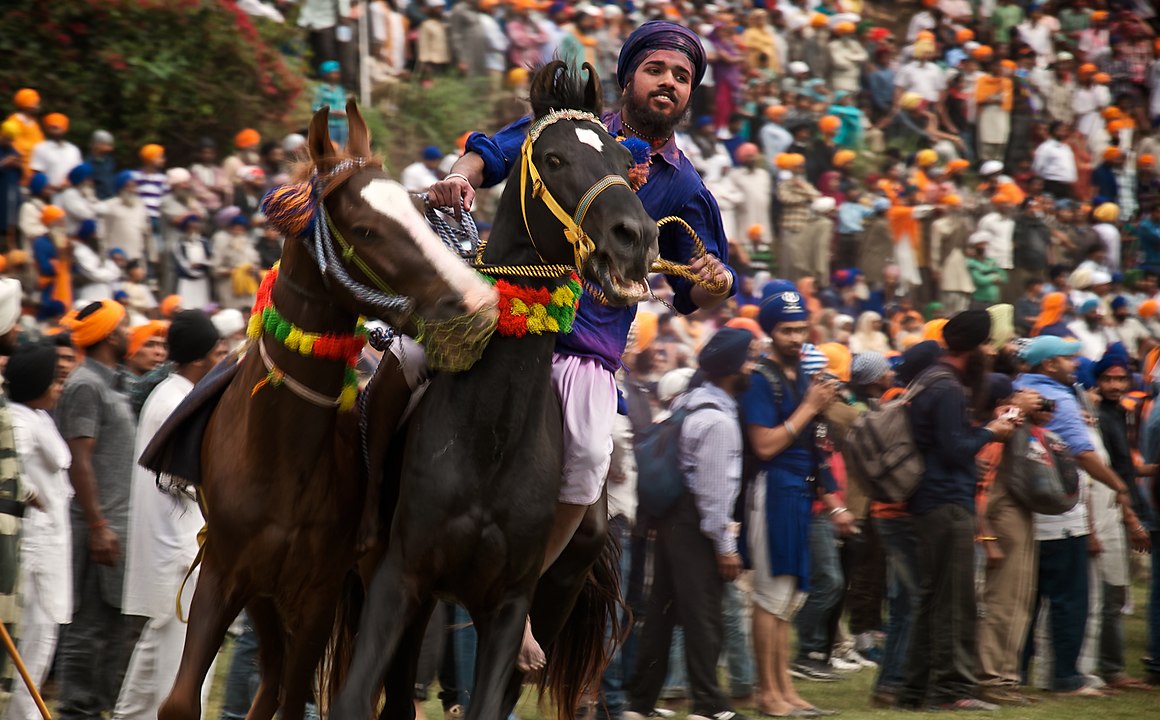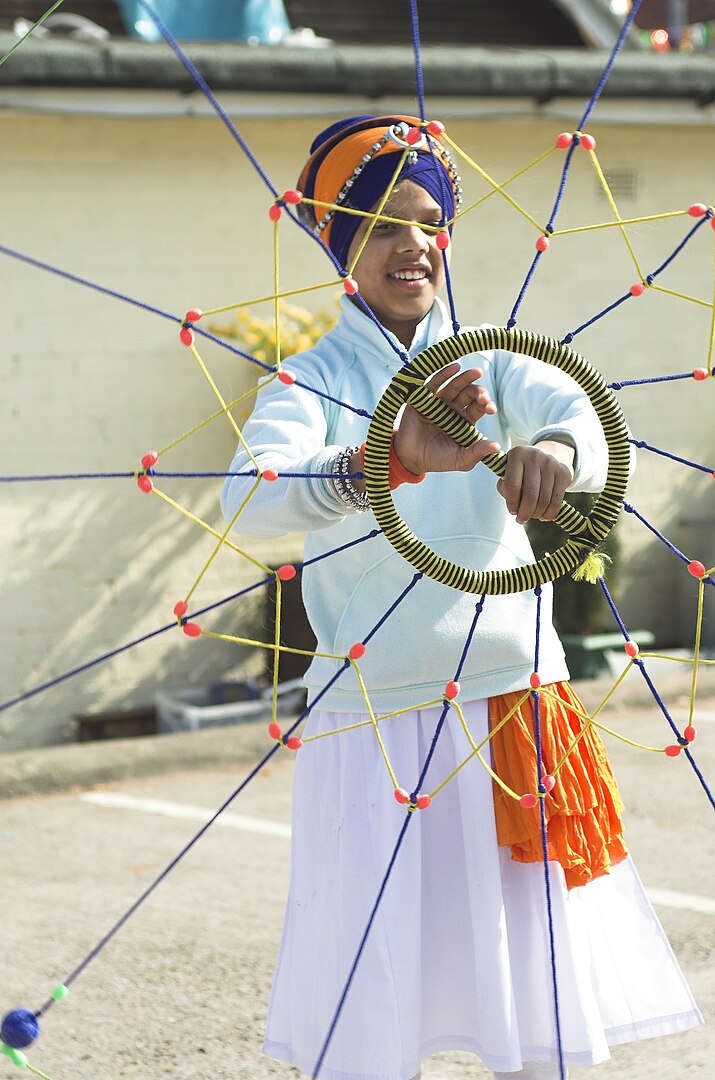Hola Mohalla (Gurmukhi: ਹੋਲਾ-ਮਹੱਲਾ hōlā muhalā), also called Hola, is a three-day long Sikh festival which normally falls in March. It takes place on the second day of the lunar month of Chett, usually a day after the Hindu spring festival Holi, but sometimes coincides with it. Hola Mohalla is a big festive event for Sikhs around the world.

Hola Mohalla History
Hola Mohalla builds upon the Spring festival of Holi. The Guru Granth Sahib contains passages prescribing the celebration of Holi by serving God. The colours of Holi manifest in the Lord’s love. As Holi starts with Holika Dahan on the full moon night of Phagan or Phalguna, the festival of Holi is referred to as the festival of Phalguna even though the actual day of Holi falls on the first day of the lunar month of Chett. Guru Gobind Singh built upon this method of celebrating Holi by adding a martial element and creating Hola Mohalla to be celebrated a day after Holi.

The festival also has roots in the story of the child Prahlada who would not accept his father, Hiranyakashipu, as god. According to Gandhi (2007), “in order to please her brother, Holka planned to burn Prahlad. She took him in her lap, sat in the midst of a heap of easily combustible straw”. Holika thought she would be protected by a cloth but it was Prahlada who survived and Holika perished in the fire. The event gave rise to the belief that good triumphed over evil. According to regional tradition, Harnaksh (Hiranyakashipu), the King of Multan, was defeated by good in the form of Prahlada. According to Lorenzen (1996), the story of Prahlada was popular with the early Sikhs. The Guru Granth contains verses reciting Prahald by the saints Namdev and Kabir, and also by the third Guru Amar Das.
Leave a Reply